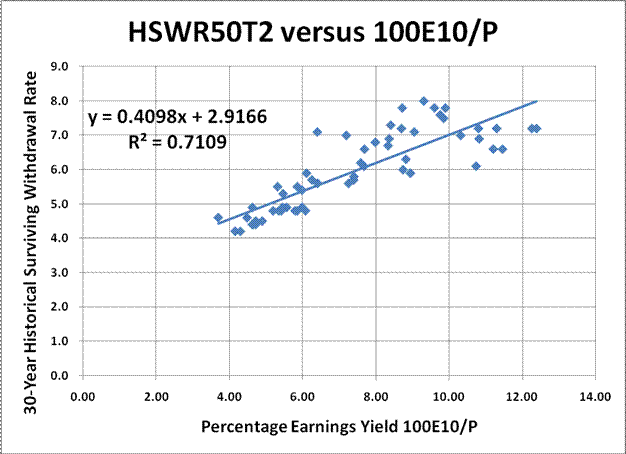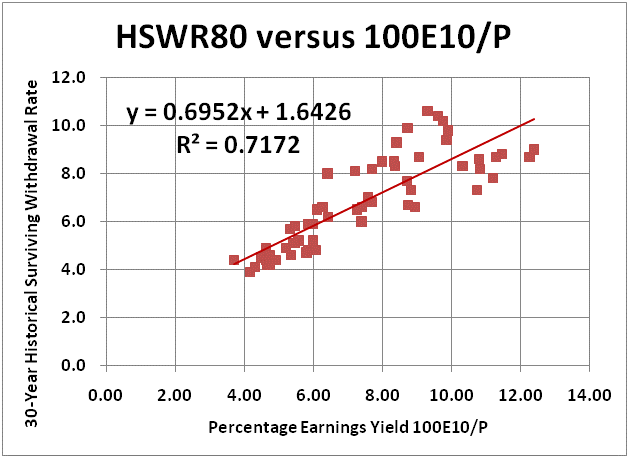|
A Glimpse at P/E10=8Stock prices may bottom within the next decade. It is at least 50%-50% that P/E10 will fall below 10. But what if P/E10 falls below 8? Imagine the bargains. Year 30 Safe Withdrawal RatesI brought up the Year 30 SWR Retirement Risk Evaluator. Here are the Year 30 Safe Withdrawal Rates at P/E10=8 with fixed allocations and 2% TIPS. Scenario Surfer RunsI invested entirely in stocks and TIPS. I started with a $100000 balance. I selected P/E10=8 Normal Market. I withdrew $9000 (plus inflation) each year. I set the TIPS interest rate to 2.0%. Here are the Year 30 balances. I have included fixed allocation results for comparison. Income Using a Constant Percentage of the Current BalanceI brought up the Deluxe Calculator V1.1A08a. I withdrew 9% of the current balance. I looked at all historical sequences that started with P/E10 values below 9. The only years meeting this criterion were 1918-1924, 1933, 1975, 1980 and 1982-1983. The four year average income fell below 8% of the initial balance (adjusted for inflation) at Year 20 in the historical sequences beginning in 1922, 1923, 1924, 1933 and 1975. DiscussionThe slight discrepancy in Safe Withdrawal Rates is because of a subtle detail in the design of the Year 30 SWR calculator. It assumes a fixed spread as valuations change. This is not really true. The spread of historical surviving withdrawal rates is almost constant with P/E10, but it increases steadily with the reciprocal 100E10/P. You can see this in the HSWR50T2 Graph and the HSWR80T2 Graph. |

